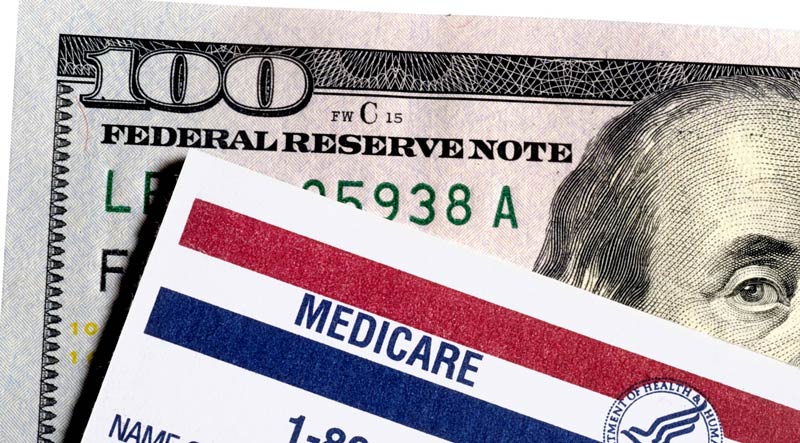Those over the age of 65 and those with certain medical conditions or impairments are eligible for Medicare, the federal government's health insurance program. Keeping medical expenditures down as you become older is a major benefit of its coverage. However, Medicare does not cover all expenses.
As you get closer to retirement age, you'll have to make some tough choices about how to fill in the coverage gaps. To get a better idea of what to expect financially in the future, it helps to understand how Medicare works for the time being.

To Whom Does Medicare Apply?
Medicare is available to anyone who has been lawfully present in the United States for five years or more and who is 65 years old or older. Anyone receiving Social Security payments is automatically enrolled in Parts A and B.
The individual must enroll in Part D coverage, which is voluntary. Social Security Disability Insurance recipients under the age of 65 may be eligible (SSDI).
To be eligible for Medicare, recipients of Social Security Disability Insurance (SSDI) must wait 24 months after receiving their first payment; however, the program waives this condition for anybody with ALS or persistent kidney failure.
Medicare: How Do I Get Started?
Part a of Medicare covers inpatient hospitalization, and Part B covers outpatient medical visits, as long as you are 65 and qualified for Social Security benefits. 10 Enrollment in these programs is automatic and requires no action on your part. However, you'll have to sign up for the rest of Medicare's benefits.
You must apply for Medicare Part D prescription medication coverage on your own if you wish to take advantage of the program. Through the Social Security Administration website, you can apply for benefits if you are not currently receiving them.
Around seven months before your 65th birthday is the ideal time to accomplish this. To put it another way: The three months leading up to and after your 65th birthday are included in this timeframe. If you don't show up, you may be penalized.
Why Is Medicare So Expensive?

Individuals can choose among four distinct Medicare schemes, as previously noted. Parts A and B of Medicare and the Medicare Part C plan provide most of the coverage for basic Medicare. Medicare Part D is an additional option available to beneficiaries.
So What Is Covered by Medicare Part A?
There are a few exceptions to this rule: skilled nursing facilities, hospice care, and home-based healthcare are all covered by Medicare Part A. Long-term or custodial care isn't covered by this plan, though. 13 Anyone who gets Social Security income is automatically covered. The Social Security website can enroll persons who do not currently receive benefits.
Medicare Part B Coverage
Outpatient treatment, such as doctor visits, is often covered under Medicare Part B. Preventive care; ambulance services, some medical equipment, and mental health coverage are also covered by Part B. A small number of prescription medications are also covered under this program.
Medicare Part B subscribers will pay an average monthly premium of $170.10 in 2022, increasing $21.60 from the 2021 rate of $148.50. In 2022, the yearly deductible will rise to $233 from $203 in 2021, a $30 increase.
Individual taxpayers who make more than $88,000 and married couples who make $176,000 in 2021 face increased rates. 17 As of 2022, the limits will climb to $91,000 and $182,000 for each.
What Is Medicare C?
In addition to Part A and B, those qualified for Medicare Advantage are eligible for Part C or Medicare Supplemental Insurance. Medicare Advantage plans are purchased from private insurers rather than the government.
Original Medicare must be the minimum standard of care for beneficiaries of Medicare Advantage plans (Plans A and B). Many of these plans include yearly restrictions on out-of-pocket expenses that can be reached.
Supplemental insurance, such as a Medigap plan, is required for many Original Medicare patients who would otherwise have to pay for their copays, coinsurance, deductibles, and even insurance fees while traveling outside of the United States under traditional Medicare.
Medicare vs. Medicaid: Which Should You Use?
Different eligibility requirements exist between the government-sponsored health insurance programs Medicare and Medicaid. On the other hand, Medicaid is a combined federal and state program that provides healthcare coverage to low-income individuals and their families.
To be eligible for Medicaid, a person must have a restricted quantity of liquid assets in their state's bank account.
Services like doctor and nurse services, x-rays, hospitalization, home health care, and lab and x-ray services are available to everyone with Medicaid coverage. Medicaid coverage is required. Prescription drugs, physical therapy, dental care, and medical transportation may all be covered in some states.
Who Qualifies for Medicare?
Medicare is a viable choice for those over the age of 65 who are qualified for Social Security. Medicare becomes eligible if you've received Social Security Disability Insurance for 24 months. 7 There is no waiting period for people with impairments like ALS or irreversible renal failure.
Is There a Cost to Medicare?
Medicare (Part A) is provided free of charge to the vast majority of Americans as a result of the Federal Insurance Contributions Act (FICA) (FICA). A person's spouse's job history might also qualify them for free Medicare (Part A). Part A of Medicare has a deductible and coinsurance for those who do not meet the eligibility requirements. Other Medicare plans need a monthly fee.



